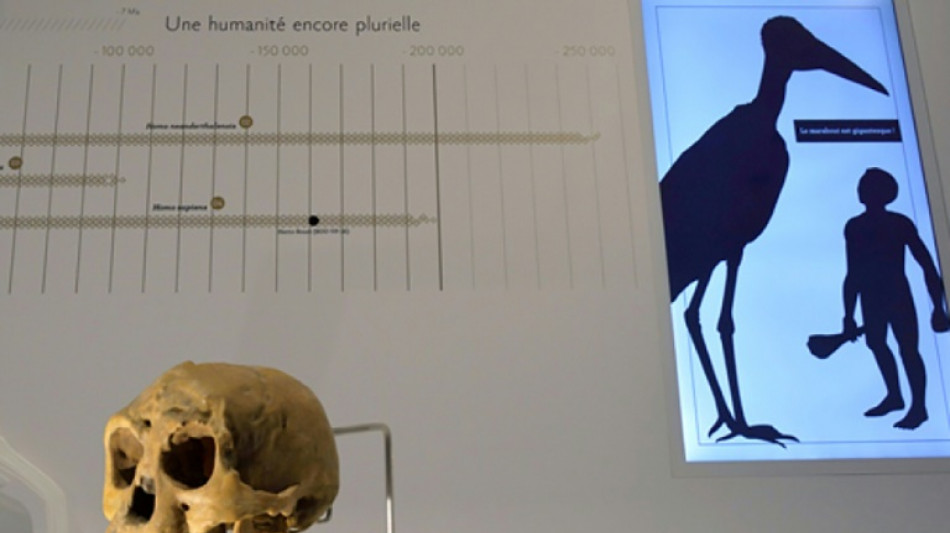
-
 UK vows to speed up asylum claims as hotel protests spread
UK vows to speed up asylum claims as hotel protests spread
-
Head, Marsh, Green hit centuries as Australia make 431-2 in 3rd South Africa ODI

-
 Pujara announces retirement from Indian cricket
Pujara announces retirement from Indian cricket
-
Bird call contest boosts conservation awareness in Hong Kong's concrete jungle

-
 Kneecap to play Paris concert in defiance of objections
Kneecap to play Paris concert in defiance of objections
-
Indonesian child's viral fame draws tourists to boat race

-
 LAFC's Son, Whitecaps' Mueller score first MLS goals
LAFC's Son, Whitecaps' Mueller score first MLS goals
-
Australian quick Morris out for 12 months with back injury

-
 Son scores first MLS goal as LAFC draw 1-1 with Dallas
Son scores first MLS goal as LAFC draw 1-1 with Dallas
-
India's Modi dangles tax cuts as US tariffs loom

-
 Indonesia turns down ear-splitting 'haram' street parties
Indonesia turns down ear-splitting 'haram' street parties
-
North Korea test-fires two new air defence missiles: KCNA

-
 Sinner, Sabalenka chasing rare repeats as US Open gets underway
Sinner, Sabalenka chasing rare repeats as US Open gets underway
-
Venezuela rallies militia volunteers in response to US 'threat'

-
 Musk's megarocket faces crucial new test after failures
Musk's megarocket faces crucial new test after failures
-
UK's mass facial-recognition roll-out alarms rights groups

-
 Home hope Henderson, Aussie Lee share Canadian Women's Open lead
Home hope Henderson, Aussie Lee share Canadian Women's Open lead
-
Fucsovics holds off van de Zandschulp for ATP Winston-Salem crown

-
 Fleetwood, Cantlay share PGA Tour Championship lead
Fleetwood, Cantlay share PGA Tour Championship lead
-
Trump Holds the Rescheduling Key: Will Marijuana Reform Follow the Patient's Right to Try Path?

-
 Argentina stun All Blacks with historic 29-23 upset win
Argentina stun All Blacks with historic 29-23 upset win
-
France begin Women's Rugby World Cup with hard-fought win over Italy

-
 Barca complete late comeback win as Atletico drop more points in Liga
Barca complete late comeback win as Atletico drop more points in Liga
-
Alcaraz targeting 'unbelievable' Sinner at US Open

-
 Swiatek plays down favorite status ahead of US Open
Swiatek plays down favorite status ahead of US Open
-
De Bruyne strikes in Napoli's strong start as Modric's Milan sank by Cremonese

-
 Springboks back in contention after win - Erasmus
Springboks back in contention after win - Erasmus
-
Cirstea downs Li to claim WTA Cleveland crown

-
 Nigeria says killed over 35 jihadists near Cameroon border
Nigeria says killed over 35 jihadists near Cameroon border
-
Sri Lanka ex-president rushed to intensive care after jailing

-
 Russia claims more Ukraine land as hopes for summit fade
Russia claims more Ukraine land as hopes for summit fade
-
Atletico still without Liga win after Elche draw

-
 Schell shock as six-try star leads Canada to 65-7 World Cup hammering of Fiji
Schell shock as six-try star leads Canada to 65-7 World Cup hammering of Fiji
-
Gyokeres scores twice but injuries to Saka, Odegaard sour Arsenal rout of Leeds

-
 Leverkusen stumble in Ten Hag Bundesliga debut, Dortmund collapse late
Leverkusen stumble in Ten Hag Bundesliga debut, Dortmund collapse late
-
Man City revamp rocked by Spurs, Arsenal thrash Leeds

-
 Gyokeres scores twice as Arsenal rout Leeds
Gyokeres scores twice as Arsenal rout Leeds
-
De Bruyne strikes in Napoli's strong start to Scudetto defence at Sassuolo

-
 Seoul says fired warning shots after North Korean troops crossed border
Seoul says fired warning shots after North Korean troops crossed border
-
McGhie the hat-trick heroine as Scotland overwhelm Wales in Women's Rugby World Cup

-
 'It's in my DNA': Williams relishes US Open return at 45
'It's in my DNA': Williams relishes US Open return at 45
-
Portugal suffers new wildfire death as Spain beats back blazes

-
 Pollard steers Springboks to victory over Wallabies
Pollard steers Springboks to victory over Wallabies
-
Aubameyang stars as Marseille end chaotic week on five-goal high

-
 US govt wants migrant targeted in crackdown deported to Uganda: lawyers
US govt wants migrant targeted in crackdown deported to Uganda: lawyers
-
Man City revamp rocked by Spurs, Villa beaten at Brentford

-
 Philipsen wins Vuelta a Espana opening stage
Philipsen wins Vuelta a Espana opening stage
-
Crystal Palace's Eze returns to boyhood club Arsenal

-
 Reyna trades Dortmund for Gladbach chasing 'new chapter'
Reyna trades Dortmund for Gladbach chasing 'new chapter'
-
Leverkusen stumble in Ten Hag Bundesliga debut


Discovery of tiny bone sheds light on mysterious 'hobbit' humans
The discovery of a tiny arm bone suggests that an ancient human dubbed "hobbits" only shrank down to their diminutive size after they arrived on an Indonesian island a million years ago, scientists said on Tuesday.
Much about the pint-sized Homo floresiensis has been shrouded in mystery since the first fossils suggesting their existence were found on the island of Flores in 2003.
These tool-using hominins are believed to have been living on the island as recently as 50,000 years ago, when our own species homo sapiens was already walking the Earth, including in nearby Australia.
From some 60,000-year-old teeth and a jawbone found in an island cave, scientists had previously estimated the hobbits were around 1.06 metres (3.5 feet) tall.
But the discovery of part of an upper arm bone as well as some teeth at an open-air island site on the island suggests some hobbits stood just one metre tall around 700,000 years ago, according to a study in the journal Nature Communications.
The bone was so small, that at first the international team of researchers thought it must have been from a child.
Study co-author Adam Brumm, an archaeologist at Australia's Griffith University, told AFP that it was the smallest humerus fossil of an adult hominin ever found.
- 'Truly epic' -
The discovery could tip the scales in a heated debate among scientists about how H.floresiensis became so small.
One side argues that the hobbits -- nicknamed after the little heroes in JRR Tolkien's fantasy novels -- descended from an already small earlier hominin which arrived on Flores around a million years ago.
Others believe that it was our ancestor Homo erectus, which were roughly our size and had spread throughout Asia, that became trapped on the island, only to then evolve into the smaller H.floresiensis over the next 300,00 years.
The researchers behind the latest discovery believe it strongly supports the latter theory.
These ancient humans "reduced drastically in body size according to a well known evolutionary phenomenon known as island dwarfism," Brumm said.
Under this process, larger animals tend to shrink over time to adapt to their limited surroundings.
The tropical island was home to other smaller-than-normal mammals, including a cow-sized relative of the elephant.
The newly discovered teeth also look like smaller versions of those from Homo erectus, the researchers said.
"If we are correct, it seems that Homo erectus was somehow able to cross formidable deep-sea barriers to reach isolated islands like Flores," Brumm said.
"We don't know how they were doing this," he said, adding that "accidental 'rafting' on tsunami debris" was one possibility.
Once these ancient humans were trapped on the island, they managed to survive for hundreds of thousands of years, evolving into "strange new forms," Brumm said.
Mark Moore, an archaeologist at Australia's University of New England not involved in the study, said the discovery means "we can now confidently say" that the Homo erectus theory is the more likely scenario.
Moore, who has studied the stone tools used by the hobbits, told AFP that this "technology did not shield our cousin species from the forces of biological evolution".
That the hobbits changed so much over just 300,000 years was "a reminder of the power of natural selection," he added.
"The evolutionary story of this group of hominins is truly epic."
O.Norris--AMWN

